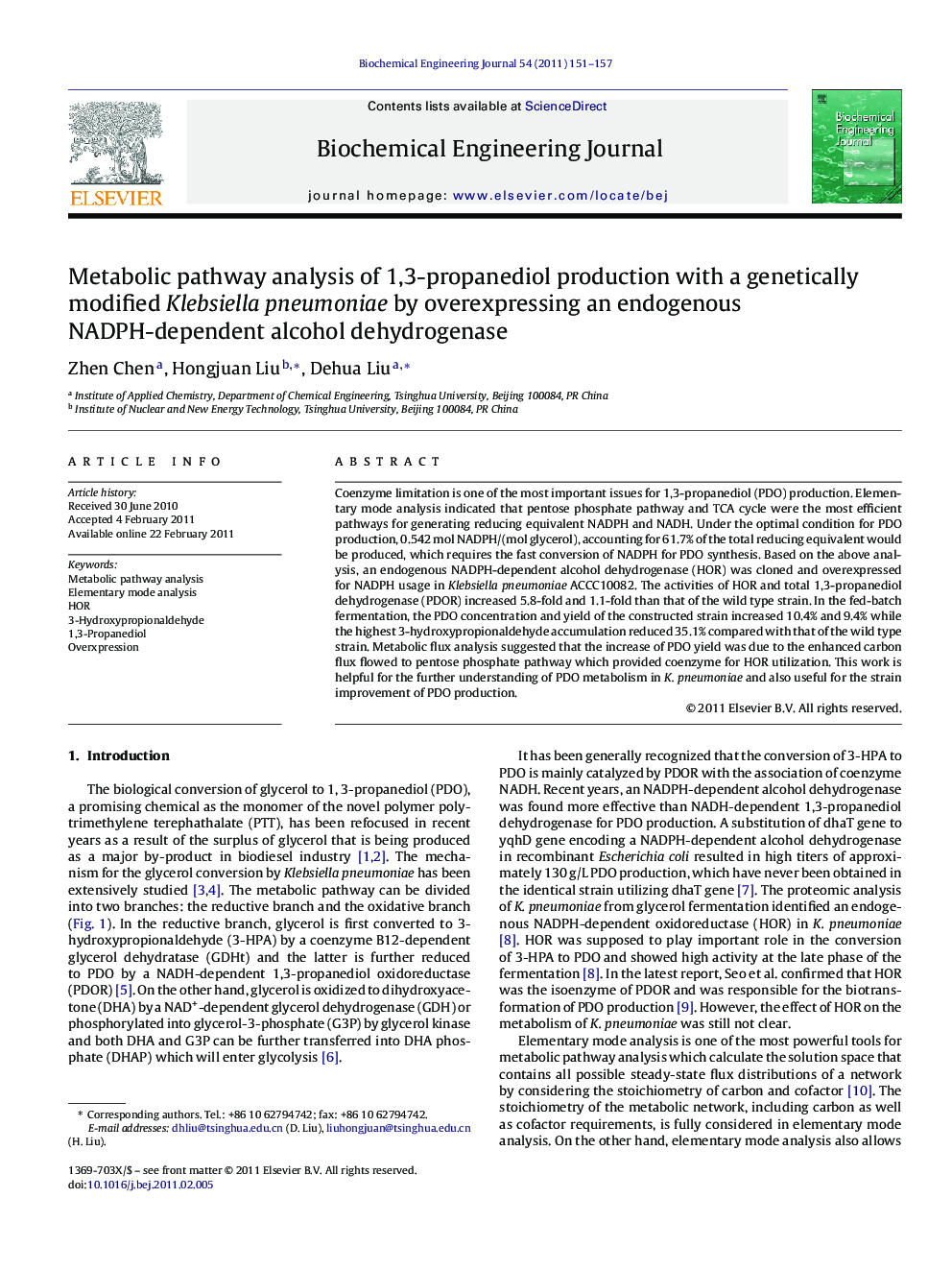| Article ID | Journal | Published Year | Pages | File Type |
|---|---|---|---|---|
| 3788 | Biochemical Engineering Journal | 2011 | 7 Pages |
Coenzyme limitation is one of the most important issues for 1,3-propanediol (PDO) production. Elementary mode analysis indicated that pentose phosphate pathway and TCA cycle were the most efficient pathways for generating reducing equivalent NADPH and NADH. Under the optimal condition for PDO production, 0.542 mol NADPH/(mol glycerol), accounting for 61.7% of the total reducing equivalent would be produced, which requires the fast conversion of NADPH for PDO synthesis. Based on the above analysis, an endogenous NADPH-dependent alcohol dehydrogenase (HOR) was cloned and overexpressed for NADPH usage in Klebsiella pneumoniae ACCC10082. The activities of HOR and total 1,3-propanediol dehydrogenase (PDOR) increased 5.8-fold and 1.1-fold than that of the wild type strain. In the fed-batch fermentation, the PDO concentration and yield of the constructed strain increased 10.4% and 9.4% while the highest 3-hydroxypropionaldehyde accumulation reduced 35.1% compared with that of the wild type strain. Metabolic flux analysis suggested that the increase of PDO yield was due to the enhanced carbon flux flowed to pentose phosphate pathway which provided coenzyme for HOR utilization. This work is helpful for the further understanding of PDO metabolism in K. pneumoniae and also useful for the strain improvement of PDO production.
Research highlights► Elementary mode analysis was used for micro-aerobic PDO production by Klebsiella pneumoniae. ► PP pathway and TCA cycle was the most efficient for generating reducing equivalent. ► An endogenous HOR gene was cloned from K. pneumoniae ACCC10082 and overexpressed. ► The activities of HOR and total PDO dehydrogenase increased 5.8-fold and 1.1-fold. ► Increased carbon flux flowed from glycerol to PDO and to PP pathway provided coenzyme.
